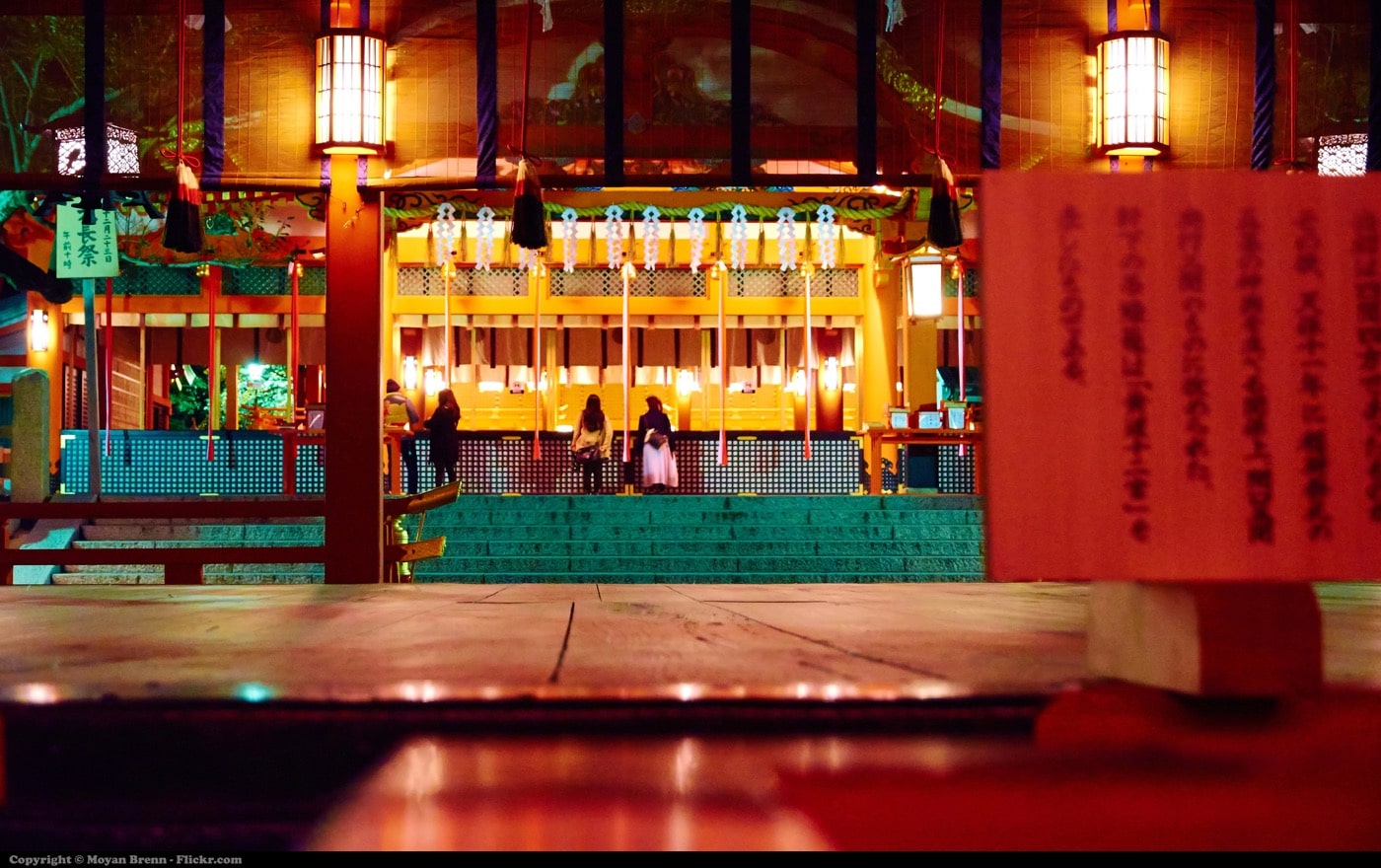Often compared with Tokyo, Kyoto is Japan’s most manageable city, one of the world’s greatest walking cities, and perfect for biking, too. It’s laid out on a grid so getting lost is a choice rather than the inevitability like in Tokyo. Walk, rent bicycles, or even take public transportation which is reliable, clean, and efficient. Many people understand English and, unlike Tokyo, most are not in a big city hurry so making contact and conversation is easier. Don’t be surprised if people in Kyoto come up to you in markets or in bars and strike up a conversation. The city’s ancient temples are beautiful and evocative and their carefully laid out compounds seem to have been designed by the gods themselves. But after the spiritual journey is over, what’s next you wonder?
Folks in Kyoto have a saying: “Tokyo for business, Kyoto for pleasure.” Indeed, for centuries both Japanese and foreigners have flocked to this old imperial capital to explore its vistas – not just the temples, but the narrow alleyways lined with clubs, bars, and restaurants, as well as the brick streets lit magically like movie sets in the old pleasure quarter of Gion. Having never been bombed during the war, Kyoto’s untarnished architecture is typically no more than three stories high, and it’s varied and very beautiful.
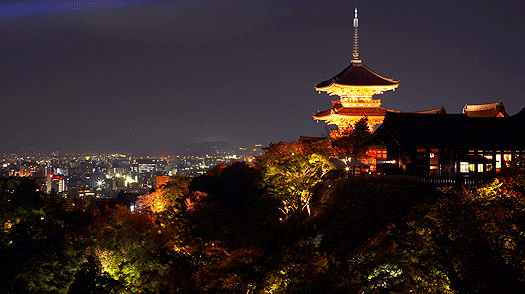
The only thing you need to know about visiting Kyoto is that if you go in summer, to see and perhaps participate in the famous Gion Matsuri or summer festival, come prepared to sweat. The city is kind of trapped in a long valley and, in July and August, the humidity and heat can be unbearable.
Other than that, Kyoto is worth your time and repeat visits. It’s one of the most beautiful cities on earth with long, lovely streets lining canals, ancient architecture set alongside the modern, a beautiful river that has good cafes and bars and restaurants lining its banks, views of the hills and mountains, people who are reserved but unpretentious, and a range of possibilities for dining that won’t set you back financially.
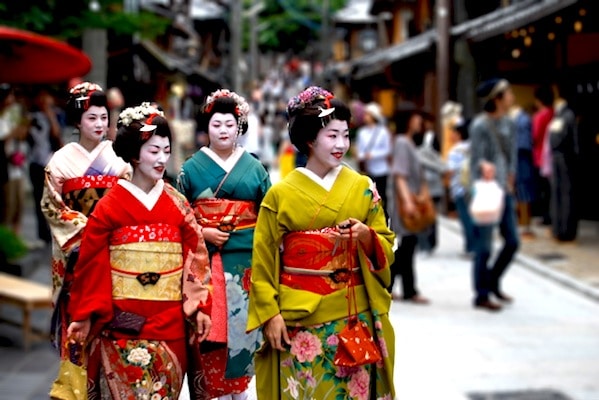
The city is changing, too.
This year the Ritz Carlton opened in Kyoto and next year The Four Seasons is opening. These two luxury properties join the city’s current best hotel, the Hyatt Regency, and all three offer visitors upscale experiences that provide an oasis not just from the heat and crowds, but also a refuge that has its own unique vibe. That’s because the way the Japanese travel differs much from the way Westerners take to the road. As Americans, we tend to take holidays that are at least a week long, usually longer, and use our accommodation as a base for sightseeing. In contrast, the Japanese usually vacation for two or three days at a time and where they stay is self-contained: great spa, great room, great bar, and great restaurants. So when you go to Kyoto, spring for the best you can afford within your budget. You’ll be amazed by the digs you acquire and the level of service.
At the Hyatt Regency, for example, you have wide, open space that seems to embrace guests. Touzan, its bar, sunken below the ground floor, is the epitome of chill, and it’s here that darkness and jazz can captivate you. On a recent visit, the bartender, shaking my drink with the characteristic drama of the Japanese, made it look so appealing that a local, a few seats down, ordered the same thing, telling me he had never had the drink before. We clinked glasses.
The Hyatt is close enough for walking to the temples and Gion, and the latter route takes you through lovely, quiet residential neighborhoods where you get a feel for ordinary life as you pass school kids in uniforms and take in the aroma of home cooking. Plus, you can visit reasonably priced artists’ studios selling fabrics, pottery, and woodwork.
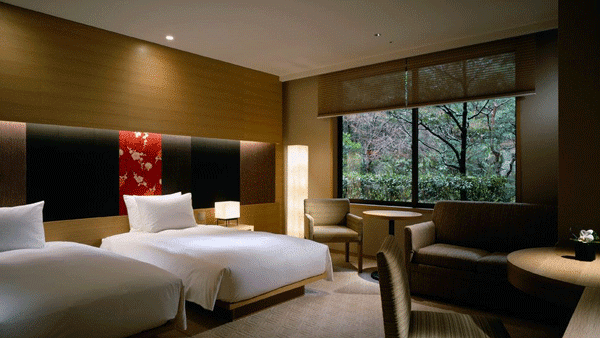
The hotel itself features an enclosed garden, spacious rooms, a kaiseki restaurant, and an Italian trattoria. Italian food is the current craze in Japan. What the hotel lacks in terms of novelty, it makes up for in service. The staff takes an actual interest in the guests and can book tables for you at hard to find, non-English speaking restaurants – note: you order your meal before you arrive.
Should you seek the latest, the Ritz, which just opened in February this year, is more sedate, but still creating its own unique atmosphere. It offers both Italian and Japanese restaurants. The Japanese dining is divided into sushi, tempura, teppanyaki, and kaiseki. Or: raw, fried, grilled and tasting menus. The guest is asked to choose one type of dining experience, but, with advance notice, the kitchen is willing to come up with a comprehensive menu.
Most of this new hotel’s rooms face the exquisite Kamo River and, as it’s within walking distance of the modern downtown and ancient Gion, you’re offered serenity here or there. The rooms are lovely, with a window the width of the space, that you may be temped to stay in and look out at the bicyclists and walkers on paths lining both sides of the river.

In addition to these lodging options, why not rent a house?
Kyoto has some old, restored machiya, or townhouses available for short stays. These are small, wooden structures, evident throughout Japan, but fewer in number today since many are being torn down. They are a delightful throwback to old Japan before Westernization took hold. I rented a charming one in Gion, situated among the canals and side streets close to the river and only a few miles from the train station. We had to use a code to enter and after we punched in the numbers and slid open the polished, blond wooden door, we found ourselves in a tiny stone alcove opening into the main room, which was the entire width and length of the house. An upstairs tatami room with big futons and pillows mirrored it in size. The scale of everything was quite small and the walls bare. The only sound was the purr of the A/C unit. Downstairs and adjacent to the main room was a sink, a mini refrigerator and a stove with two burners, all pristine with gleaming metal surfaces and everything super-hygienic. To the rear was an outdoor stone garden situated next to a sunken tub, bathroom, and shower. Having removed our shoes at the stone alcove, we walked barefoot on the straw matting and took in its calming aura.
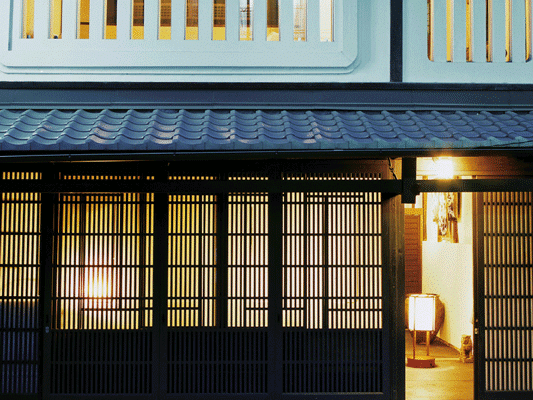
Once you establish your address—hotel or house—you must start exploring.
Each region of Japan is famous for centuries old traditions of cuisine, and while Kyoto is known for kaiseki, few here indulge in this pricey and lengthy meal. It can be delicious and memorable, but at the price, it’s a treat rather than a ritual. If you’re staying in a hotel, you’re better off starting your day with their lavish buffet, which typically is a marvel of western and Japanese dishes. If you’re in your own house, have a light breakfast of yogurt from Hokkaido and a first-rate baguette from a local French bakery.
Begin touring by taking a walk to Nishiki market, a long arcade lined with shops and vendors, where you can pick-up prepared foods like fried chicken, grilled eel, tofu, seasonal fruits, and vegetables, as well as coffee and teas. For under $20 per person, these can be prepared for lunch. Or, head over to the phenomenal food hall in the cellar of the Takashimaya department store. Here you’ll find food so precious and perfect that it looks like art – fresh king crab and marbled beef from Hokkaido, exquisite melons and grapes, the most luscious tomatoes I have ever tasted, grilled unagi and hamo (conger eel), and great varieties of tofu, sashimi and fresh fish just out of the water. Two popular words the Japanese use to describe delicious foods are “oishi” and “umami.” Umami is a flavor so long and deep that each bite provokes a different and more intense experience.
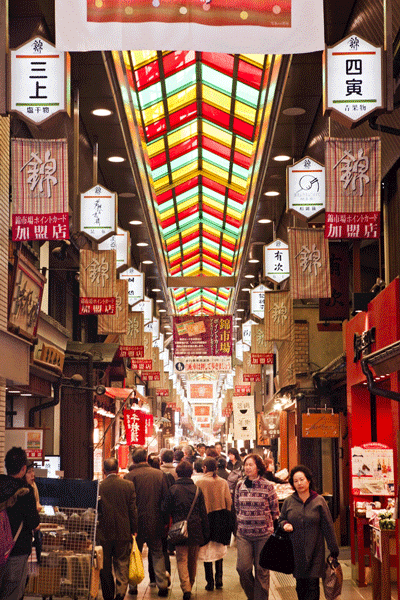
Kyoto is home to numerous universities—its sister city in the U.S. is Boston—so there are many places where you can eat well and affordably. Forget about ramen. We’re not talking about ramen. Despite the fad in the states, ramen in Japan is like a hot dog in New York City—cheap protein that’s high in fat and salt. You’re much better off enjoying soba, unagi, or yakitori.
Soba joints are everywhere. Three of the best are: Omen, Daikoku-ya, and Honke Owariya (serving noodles for the past 540 years!). You sit down, order a bowl (hot or cold), and dip the noodles into a mix of soy and mirin. Slurping is de rigueur. The places that are exemplary use good buckwheat flour and make the noodles in-house daily. Unagi, or freshwater eel, is expensive and much of it comes from China, which isn’t recommended. There is some from local farms in Japan and two of the best places in town to find it are Kaneyo and Matsuno. The eel is offered in various set plates, with pickles, and the sweetness and saltiness together is sublime.
For yakitori, your best bet is Hitomi. There’s nothing more fun that ordering skewer after skewer of chicken parts in a Japanese yakitori joint while drinking cold drafts or shochu on the rocks (a whisky made from barley, rice, or other vegetables with low alcohol content). If Hitomi is booked (try to reserve way ahead), chances are you’ll be thrilled at Torito. The yakitori here is really just as good as Hitomi, the main difference being you’re sitting at a counter so it’s not as intimate.
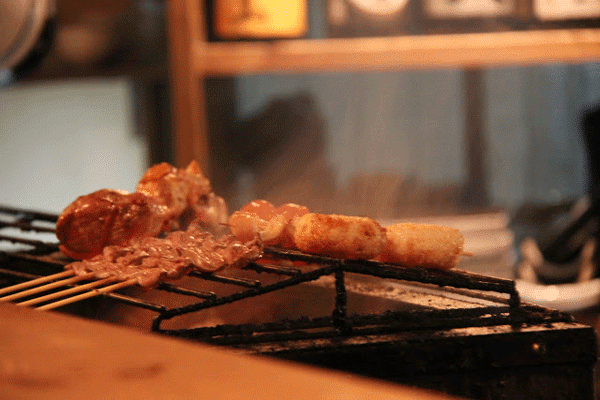
I slid open the wooden door of Hitomi and heard the first, “Irasshaimase!”of our trip. This is the greeting you’ll hear in restaurants and stores and, while it literally means, “Welcome!,” it is usually shouted so enthusiastically that you feel important to the person greeting you. Seated on the floor upstairs with menus in Japanese, I felt welcomed, but at a loss. My Japanese is limited and no one in the restaurant spoke any English. So I did what I often do in Japan—I acted out my order. I touched my chest—breast of chicken. I put my fists together with my arms akimbo—wings. I pulled up my skin. I pointed to my thighs. I drew a picture of a raw egg and a meatball. And I said, “Biru nihon, onegaishimasu,” to get two drafts. The skewers arrived in succession and we were satisfied.
For a splurge in Kyoto, head to Kappa Sakamoto, a one star Michelin restaurant in Gion run by Ryuta Sakamota. It has only five counter seats and eight small tables. The food is served by the chef (who speaks English) and in slow succession, with small plates of seasonal dishes like mountain vegetables, baby bamboo shoots, river fish, yuba (tofu skin) and local beef, ending with rice. You will feel a deep connection to nature that, really, only kaiseki dining achieves.
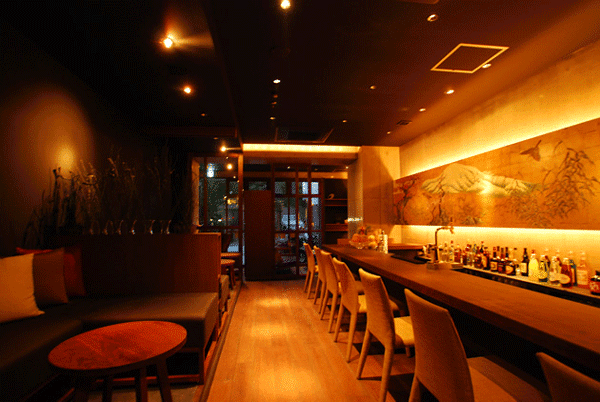
Kyoto doesn’t have the notorious nightlife of Tokyo, but instead has an impressive array of unique bars and small clubs where foreigners are welcome. Gion is home to numerous joints that are hard to find, having little or no signage. You climb a set of stairs or take an elevator to find yourself in a place that looks like someone’s living room or a Vegas lounge or an art gallery. Gion Deux, in a hidden alley, is one such place, with a long bar, intimate lighting, and superb cocktails. It’s great for an evening of people watching or for conversing with someone close. Sferabar Satonaka (in Gion) is a smidge livelier with a staff that’s friendly and curious about what brought you to this place. It serves lots of good cocktails with seasonal fruit. If you’re lonely for the West, you must stop by the Gael Irish Pub. Located on the second floor of an ordinary building in Gion, it has great beers on tap, decent food, a mixed crowd of foreigners and locals, and a staff that’s fluent in English and charming to match.
Jazz and rock have been a big part of Kyoto’s nightlife since the 1950s, and while the venues don’t attract international stars like in Tokyo, you’ll still be amazed at the depth of the talent. At places like Live Spot Rag, Taku Taku, and UrbanGuild, you’ll have a chance to take in the local vibe.
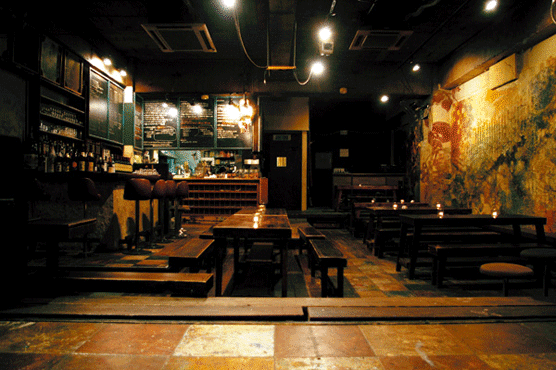
All in all, Kyoto is one of my favorite cities in the world—accessible, easy going, lively, and ever changing within the context of its rich history. Omotenashi is the Japanese word for “hospitality,” and it’s here that you’ll find it bountifully.
The county code for Japan is 81, then 75 for Kyoto.
[alert type=white]
Where to Stay:
Hyatt Regency—This stylish hotel in located in the historic heart of Kyoto, Higashiyama Shichijo. Spend the day immersing yourself in Kyoto’s history, then come back to your room for modern amenities. 644-2 Sanjusangendo-mawari, Higashiyama-ku; 81 75 541 1234; www.kyoto.regency.hyatt.com
Ritz Carlton—Let the reliable staff show you the time-honored traditions of Japanese hospitality while you enjoy the wonderful views of the famous Higashiyama Mountains. Conveniently located for both sightseeing and business, it’s only steps away from downtown districts. Kamogawa Nijo-Ohashi Hotori, Nakagyo-ku; 81 075 746 5555; www.ritzcarlton.com/kyoto
Machiya Tea House Rentals—These charming houses are the perfect way to immerse yourself in Kyoto’s culture. We paid abut $1,300 for five nights, but rates vary depending on seasons and days of the week. 81 090 7116 1785; rentalhouse@hotmail.jp
*To get a complete listing of rental properties in Kyoto, go to VRBO, which stands for Vacation Rental By Owner. Each rental property has a completely independent arrangement for payment: Credit cards, Pay Pal, Cash, etc. www.vrbo.com
Where to Eat:
Nishiki Market—This quaint market is the best place to eat like a local. The staff is exceptionally friendly and is more than willing to help you decide what to eat no matter what language you speak. The market is only a short walk from the Shijo Subway Station and the Karasuma Station. Nishiki Koji-dori, Nakagyou-ku; www.kyoto-nishiki.or.jp
Hitomi—This inviting restaurant has some of the best food and sake in Kyoto. Come hungry and try as many of the small plates as you can. Hitomi is located only a couple minutes from the San-jo Keihan subway station; 81 075 771 7818.
Omen—Tourist-friendly and well-known for its udon noodles, which are served in either a cold or hot broth. 74 Ishi-bashi-cho, Jodo-ji, Sakyo-ku; 81 075 771 8994
Honke Owariya—This is the place to try authentic soba, the thin brown noodles made from buckwheat and wheat flour. Everyone from tourists to the emperor’s family has come here for the comforting noodle dish. 322 Kurumayacho-Nijyo-ku; 81 075 231 3446; www.honke-owariya.co.jp/english/
Sakamoto—This family-owned restaurant recently earned one Michelin star. Chef Ryuta not only serves delicious Japanese dishes, but maintains the cozy, welcoming atmosphere that his parents brought to Sakamoto. Kyoto City Higashiyama Ward Gion
Sueyoshi-cho Japanese Main Street; 81 075 551 2136; www.gion-sakamoto.com/en
What to Do:
Takashimaya—Dating back to 1831, Takashimaya is a shopper’s dream. Don’t miss the food hall, which has quite the spread of traditional Japanese food. 52, Shinmachi Nishiiru, Kawaramachi Shijodori, Shimogyo-ku; www.takashimaya-sin.com
It’s Gion Deux—This swanky bar is one the best places to hang out and rub elbows with the locals. Don’t miss their seasonal signature cocktails, like the refreshing Peach Bellini available during the hot summer months. 80-1,sueyoshi-cho,gion,higashiyama-ku, 81 75 531 8321; www.lerdr.jp/its/.
Satonaka—This swanky nightclub is one of the best places to experience Kyoto’s nightlife. In honor of its tenth birthday, it recently opened up a third floor, which is even cooler than the first two floors. 3F Sfera Building, 17 Benzaiten-cho, Higashiyama-ku; 81 075 541 1197
Gael Irish Pub—This English-speaking bar is one of the liveliest joints in Kyoto. Tourists and locals alike flock here for good beer and live music every night. Yamato, ohji-Shijo-Agaru, Higashiyamaku-kyoto, 2F OhtohBuilding; 81 75 525 0680;www.irishpubkyoto.com
Live Spot Rag—One of the coolest live music venues in Kyoto. Squeeze into the intimate space to hear some of the hottest professional and amateur artists in Japan. 604-8001 Chukyo-ku, Kyoto Sanjo Kiyamachi;
81 075 241 0446; www.ragnet.co.jp
Taku Taku—Located in an old storehouse, this mellow live music joint is all about rock and blues. Tominokoji-dori, Bukkoji-sagaru Shimogyō-ku; 81 075 351 1321
Urbanguild—This dimly lit live music venue is a hot spot for Kyoto’s artsy crowd. From the art-covered walls to the creative food menu, everything screams downtown cool. 604-8002 Hikaru the city, Kyoto Bunkyo Kiyamachi, Rue ni Hikaru Bldg 3F; 81 075 212 1125; www.urbanguild.net
[/alert]

